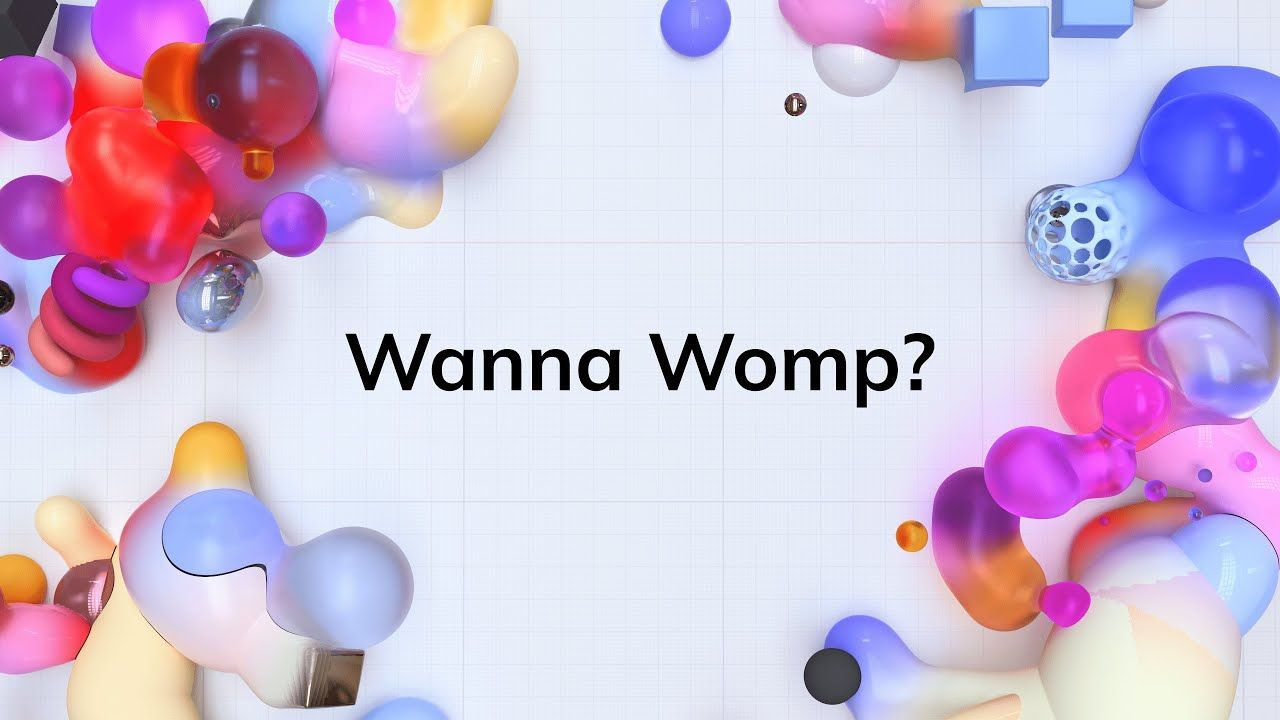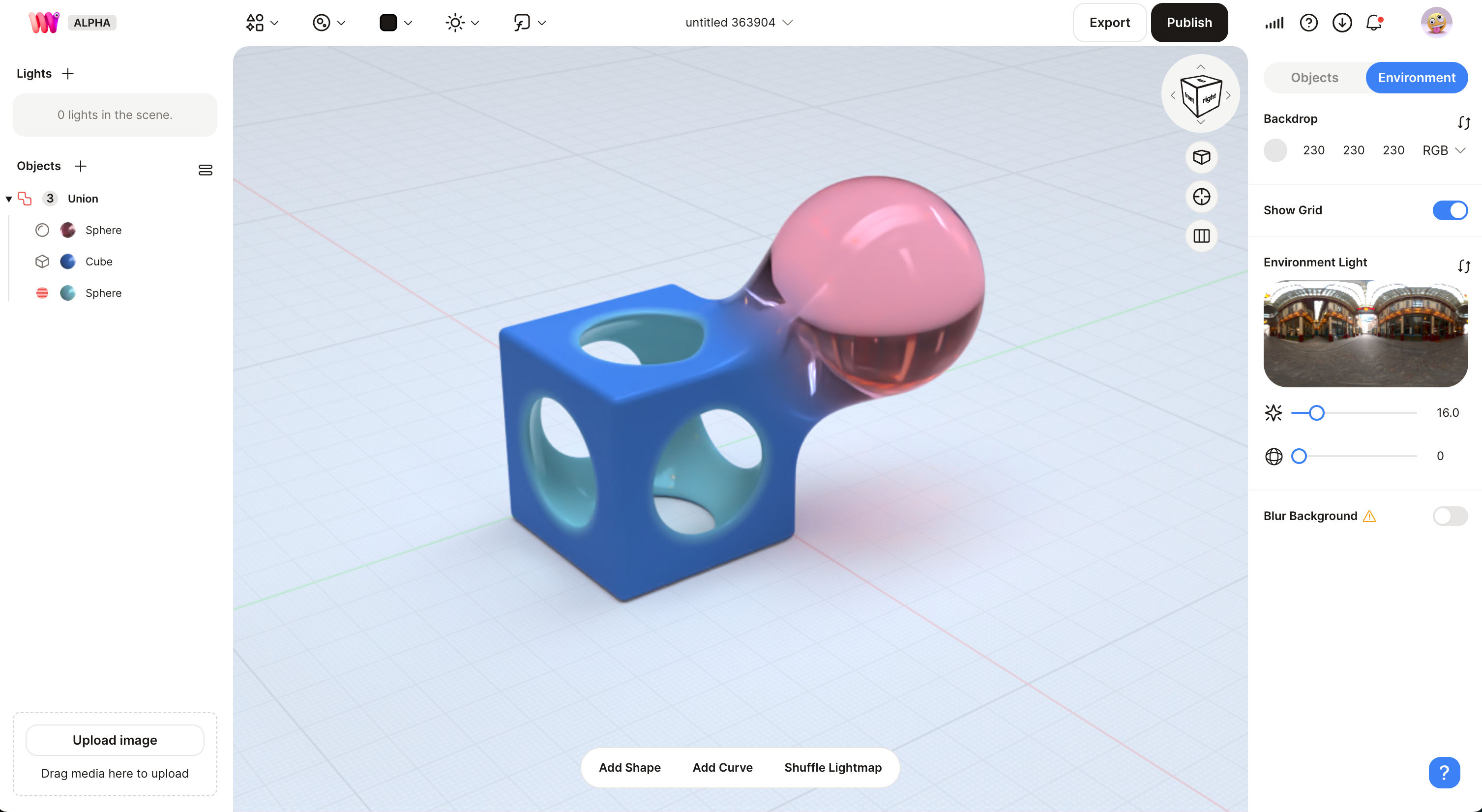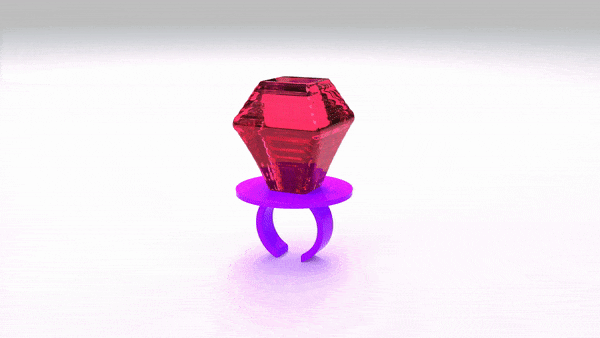A few days ago I was scrolling on Instagram, as per usual, and the algorithm gods bestowed upon me my next hyperfixation: 3D modeling with Womp. Womp is a browser-based tool for 3D modeling, in contrast to Blender, which is a desktop tool I've been using to learn 3D modeling.
 These blobs have no business looking so much like candy. I want to bite them
These blobs have no business looking so much like candy. I want to bite them
Advantages
A few things in particular immediately drew me to Womp:
- Remote rendering. Womp is rendered remotely on a server with some powerful GPUs, and the resulting pixels are streamed to my browser. This is awesome because it doesn't make my laptop fan sound like it's going to explode the way that rendering complex scenes with Blender does.
- Lightweight UI. The Blender UI is overwhelming and has lots of hidden menus and keyboard shortcuts. Womp is much more straightforward and has a less steep learning curve. The tutorials I saw on social media demonstrated that you can create appealing scenes in just a few seconds.
- Goopy designs. Womp has a unique look and feel, and that look and feel is self-proclaimed goopiness. The default behavior of objects in Womp is to goop together, blending colors and materials between them to create something beautiful. This behavior especially comes in handy when working with curve splines, so you can create long twisty shapes with seamless transitions along the surface.
- Leveraging negative space. It's very easy to use a shape to create interesting negative spaces within another object. In the image below, there's a negative sphere inside of the blue cube, which is creating circular holes on the cube's faces. I'm sure Blender has a way to do this, but it's a primary function in Womp.
 Blender has a starter cube in every new project, but Womp has a superior starter sphere/cube goop creation
Blender has a starter cube in every new project, but Womp has a superior starter sphere/cube goop creation
Disadvantages
As awesome as Womp is, it's not meant to be a substitute for 3D modeling with more rigorous tools like Blender or Maya. I've run into a few situations where I was frustrated with Womp's limitations and had to find creative ways to make what I wanted. Some recurring themes of problems I've run into:
- Available primitives. Womp only has 3 primitive shapes that you can work with: sphere, cube, and cylinder. Everything else is some kind of curve, where you define points to interpolate between. You can still go pretty far with combinations of these primitives, but it requires some creativity. At one point I needed to create a cone shape, so I had to use a curve with points gradually decreasing in diameter to go from a wide base to a sharp point. Blender provides a cone primitive out of the box.
- Geometry modifications. Womp doesn't create meshes made out of triangles, like most 3D modeling software. So there's no individual faces, edges, or vertices to manipulate. This means you can't add noise (chips, dents, etc.) to models to make them feel more lifelike. Everything is perfectly uniform, although that adds to the goopy appeal.
- Animations. Womp isn't an animation tool, period. There's no way to keyframe anything or define any ranges for animated values. However, Womp does provide a way to record video of a scene, and during the recording you can manipulate one control at a time. For example, you can move a slider back and forth that controls the goopiness of several objects. Or you can rotate an object yourself. But it would be nice to have a way to say "rotate this object on the y-axis from 0deg to 90deg, on loop", for example.
 In this recording I'm manually controlling the rotation of a point on a curve. It can seem jerky since my shaky human hand is in control, rather than interpolation between keyframes
In this recording I'm manually controlling the rotation of a point on a curve. It can seem jerky since my shaky human hand is in control, rather than interpolation between keyframes
Despite these limitations, I'm extremely happy to have found Womp. There's a healthy online community of Wompers (yup, that's a word) sharing their Womps and tutorials. I now have a lot more confidence in my 3D modeling skills, and hopefully I can transfer those skills to Blender. But in the meantime I'm going to continue working with Womp to create some playful, goopy creations!
